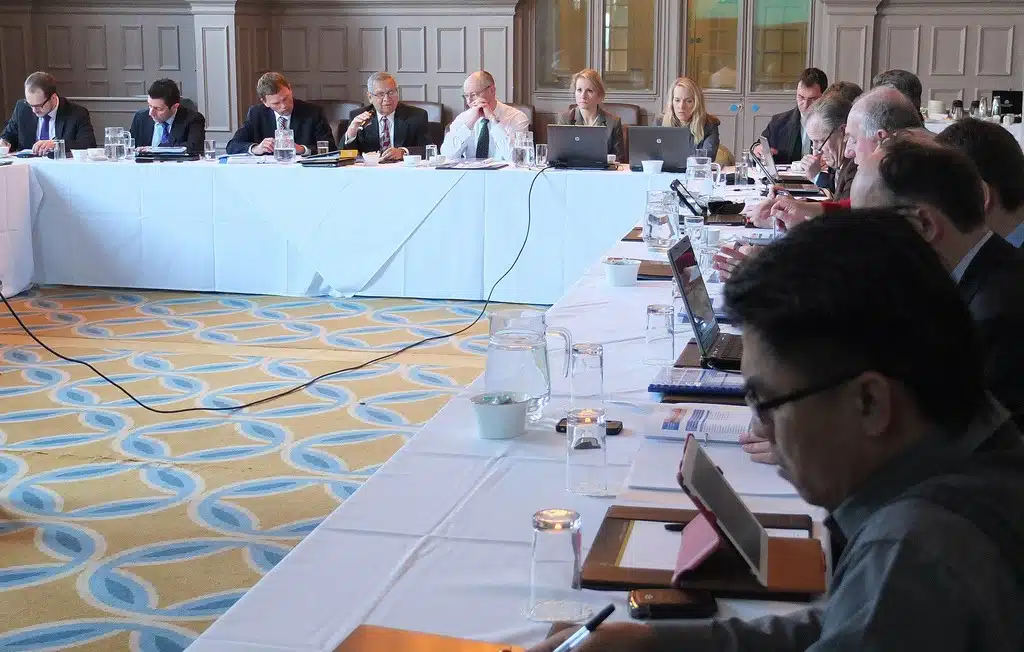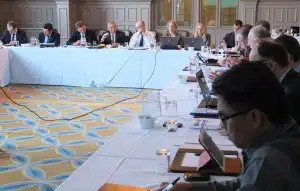27 Tips for Improving Your Nonprofit Board’s Operations



Effective board development and management is tough. Recruiting and on-boarding is a huge task in and of itself. Then comes meetings, agendas, budgets, goals and metrics. But have no fear! Here are 27 tips for improving the strength of your nonprofit board:
 Preparing for and managing board (and committee) discussion
Preparing for and managing board (and committee) discussion
1. Set the context for issues and discussion, for example:
2. Distinguish between routine and strategic issues. Focus on strategic dialogue and decision-making rather than reporting. Don’t waste time on routine issues. The Chair, CEO and each board member is responsible to make these distinctions and request that board time be spent appropriately.
3. Distinguish between governance and management. The Chair, CEO and each board member is responsible to make these distinctions and request that board time be spent appropriately.
4. Ensure that each person has the opportunity to speak, including every board member and the CEO.
The Chair of the board or committee does not dominate discussion but rather facilitates discussion by others. The Chair does the following:
5. Use time well.
6. Monitor process. Examine what you are talking about and decide if that’s what you should be discussing. Question your own process.
7. Use minimal parliamentary procedure to conduct business more efficiently. According to Roberts Rules of Order, the Chair of the board or committee never votes except to break a tie.
8. Make sure that the board accesses and uses relevant information for deliberation and decision-making. This is the responsibility of the CEO.
9. Make sure that the board considers alternative actions reflective of different points of view, hears all sides, and assesses the positive and negative consequences of various choices.
10. Work toward consensus. Ask the tough questions, find the areas of commonality, vote and support the decision made.
11. The board delegates some of its work to its own committees or task forces. However, these sub-groups of the board should not go off and begin their work until the board has outlined a process, set the context for the work, and defined the parameters of the work.
Creating the optimum agenda
12. The items on the board meeting agenda should be constructed around the role of the board and its due diligence functions. Take a look at the board job description, the due diligence plan, and the goals in your annual or multi-year strategic plan. Nothing else belongs on the board agenda.
13. The most important items go first on the agenda.
14. Use the Agenda Item Cover Sheet to provide background and to define the outcome desired, e.g., vote, input, etc.
15. There is no need for a committee or task force to report if it has nothing strategic to discuss with the board. Instead, present a written report in the advance meeting package.
16. Avoid simply reporting. Instead, committees should identify the strategic issues and facilitate board discussion around those issues.
17. Rarely is it good business to vote on something without prior notice and supporting material provided in advance. Emergencies should be rare.
18. Rarely is it good business to introduce new business on an agenda. The new business should have been presented to the CEO or board chair in advance of the meeting, to be included in the agenda.
Planning ahead
19. Project an annual board calendar, scheduling the regular activities of the board, e.g., adopting the budget and the fund development plan, conducing the CEO performance appraisal and trustee performance appraisals, electing board members and officers, and so forth.
20. Develop annual priorities with assignments of accountability and time-frames.
21. Anticipate items for future board meeting agendas by monitoring committee work and the annual board calendar. You as an individual contribute to the smooth operations of the board or the committee.
22. Listen carefully. Ask tough questions but don’t do it for the sake of causing dissent.
23. Avoid simply repeating others; that just wastes time.
24. Find patterns and commonalties as well as differences. Explore the differences to find the best answer.
25. Don’t focus on your opinion and advocate for it. Instead, listen to the perspective of others, question your own assumptions, and bring it all together for the best answer
26. Ask for focus from fellow trustees. Give feedback when you think others are not contributing to the effective functioning of the group.
27. Use parliamentary procedure to “call the question” if you feel that discussion has lasted too long. But use this tool carefully!
What works well for your nonprofit board meetings? Let us know in the comments below!
Comments